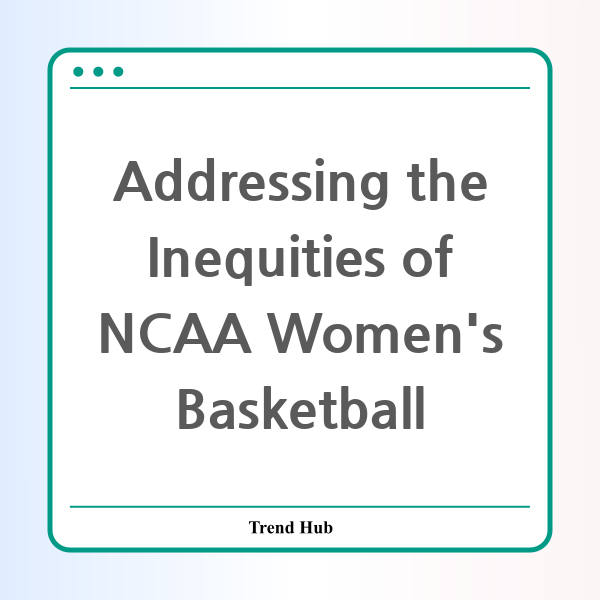* This website participates in the Amazon Affiliate Program and earns from qualifying purchases.

As the NCAA basketball tournament approaches its climax, a pressing issue has emerged that puts a spotlight on the disparities between the men’s and women’s tournaments. UConn's iconic head coach Geno Auriemma has voiced strong criticism regarding the current format of the NCAA women's basketball tournament, highlighting significant concerns about the experiences afforded to female student-athletes.
Auriemma’s comments have stirred conversations among fans and analysts alike, pointing out that the travel schedules and the reduced number of regional sites for the women’s tournament contribute to a subpar experience when compared to that of their male counterparts. Currently, the men’s tournament boasts four regional sites, while the women’s is limited to just two. This change, implemented by the NCAA, has not only raised eyebrows but also prompted Auriemma to declare that the experience for female athletes is being undermined due to budgetary constraints.
One of the most significant points raised by Auriemma revolves around accessibility. He argued that the two-regional system severely limits fans’ ability to attend games, effectively alienating a large portion of the country. With only two regions, many supporters are left unable to cheer for their teams in person, which is a key component of tournament spirit and engagement. Auriemma stated, "Half the country has no chance to get to a game in person," emphasizing the need for a more equitable approach.
In response to Auriemma’s concerns, NCAA president Charlie Baker acknowledged the criticism but indicated that immediate changes to the two-regional system were unlikely. This decision stems from a combination of logistical considerations and the existing agreements on regional sites that extend through the 2028 tournament. Baker conveyed that while the NCAA aims to enhance attendance and improve the experience for student-athletes, there are significant hurdles in altering the established framework of the tournament.
Moreover, Auriemma's sentiments about the lack of urgency within the NCAA highlight a broader concern about the governance of collegiate sports and the welfare of student-athletes. He lamented that the decision-makers aren't sufficiently invested in understanding the unique needs of the women’s game. This perception of disregard for women’s basketball raises important questions about the commitment of the NCAA to gender equity in sports.
Interestingly, not all voices within the women’s basketball community share Auriemma's viewpoint. Some coaches, like Dawn Staley, have expressed a preference for the two-regional system citing the benefits of consolidating teams in one location, potentially boosting fan engagement. Staley pointed out that having multiple teams in one spot allows for a heightened atmosphere, as fans can witness various matchups in a condensed timeframe. However, this position does not negate the concerns about travel hardships and the overall athlete experience.
With mixed opinions on the tournament format, it’s crucial for the NCAA to engage with all stakeholders, especially the student-athletes, to ensure their perspectives are truly represented. Discussions about future changes should be rooted in a comprehensive understanding of what the athletes desire, not merely what is financially advantageous. The NCAA must strive for a balance that prioritizes both the well-being of student-athletes and the financial health of the organization.
The current discourse around the NCAA women’s basketball tournament underscores a pivotal moment for the sport. As the tournament progresses, fans and supporters must continue to advocate for improvements that not only elevate the women’s game but also foster an environment where female athletes can thrive both on and off the court. Only through ongoing dialogue and actionable change can we hope to see a more equitable landscape in college basketball.
* This website participates in the Amazon Affiliate Program and earns from qualifying purchases.